A midweek road trip to Napudet for camping got students excited as they were ready to explore the rich deposits. Napudet hills lie on the Southwestern part of Turkana Basin, these Southwestern exposures present extensive fossiliferous Miocene and Plio-Pleistocene deposits.
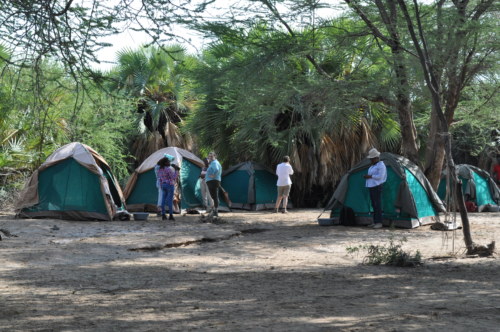
Our camping site.
Photo credit: Wambui Mbogo.
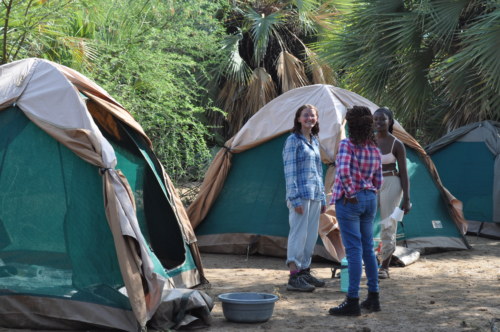
Keely, Hillary, and Margaret.
Photo credit: Wambui Mbogo.
The outcrops in the region present a plethora of fauna and flora that happened to exist millions of years ago. Fauna is key in reconstructing past environments and the behaviors of these extinct animals. Assemblages of fauna found in the area represent various taxa such as the Hippopotamidae, Rhinocerotidae, and Cercopithecidae.
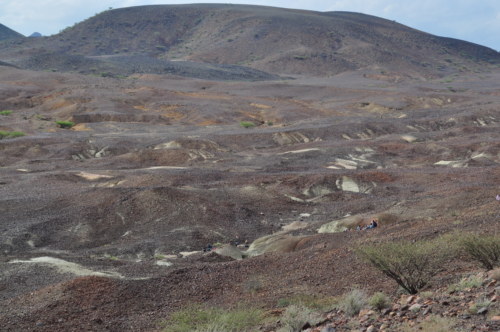
Napudet Miocene deposits!
Photo credit: Wambui Mbogo.
Napudet outcrops are such snapshots! Snapshots from the seismic volcanic activities, fluvial and lacustrine depositions. Such sediments when examined gives us information on the processes and events that shaped our landscapes.
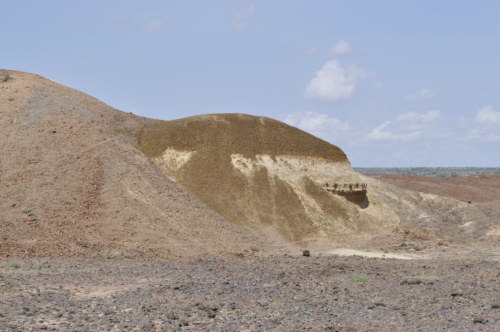
The green sediments are deposits of the Lonyumun Lake that dates to about 4.2mya.
Photo credit: Wambui Mbogo.
In recent years, various discoveries have been made in the region. The Middle Miocene Kenyapotamus ternani, a possible ancestor to living Hippopotamuses and Nyanzapithecus alesi which is the ancestor close to living apes and humans are the newest specimens to be published. Nyanzapithecus alesi specimen is an almost complete cranium of an infant. It was found by John Ekusi, a member of the research team led by Isaiah Nengo. The Emunyan Beds and the Brown Bedded tuffs in which it was found are dated to about 13mya. The species name comes from the Turkana word ‘ales’ which means ancestor.
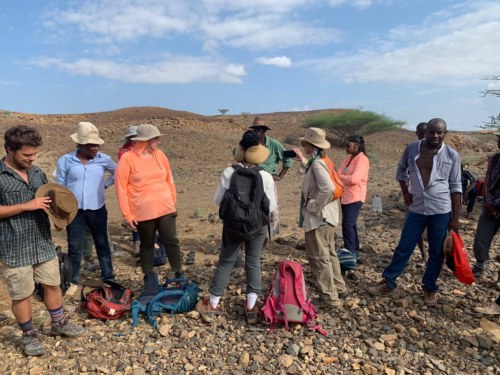
At the spot where N. alesi was found.
Photo credit: Keely Winter.
A few meters away from the site lies the Mid-Miocene forest, represented by fossil tree trunks and fossil leaf imprints. Fossil plants act as proxies for reconstructing paleoenvironments, therefore, leaf imprints provide the base for phytolith analysis. The fossil leaves in this site are currently studied by Dr. Rahab Kinyanjui.
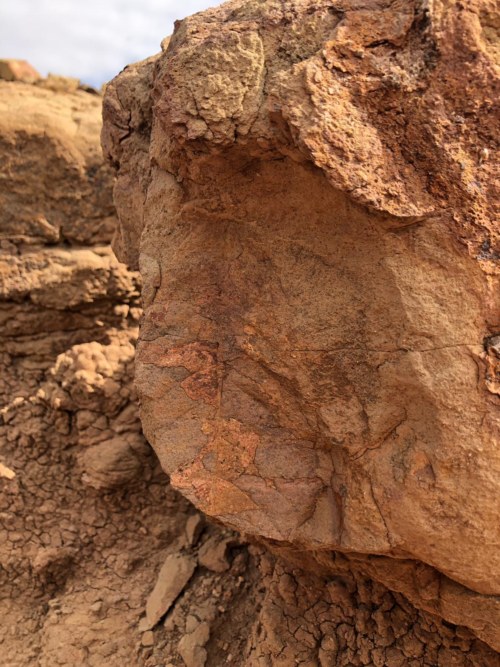
Fossil Leaf imprint.
Photo credit: Adalind Angell.
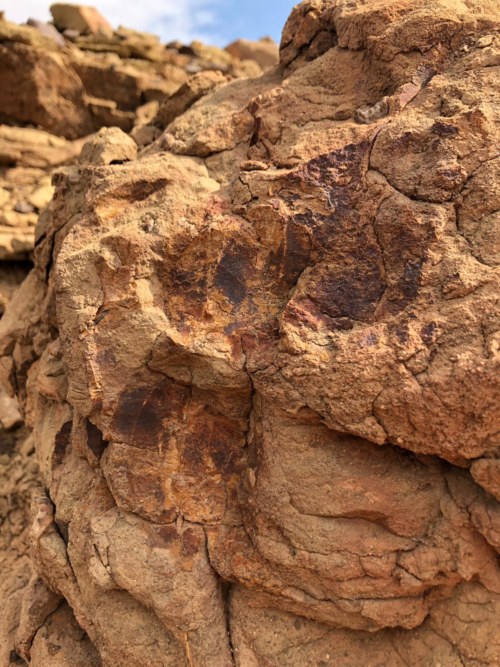
Another fossil Leaf imprint.
Photo credit: Adalind Angell.
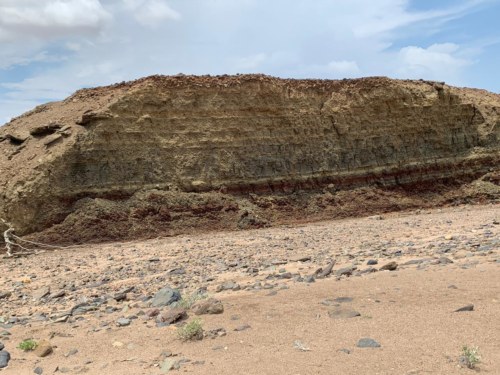
An outcrop exposing the Late Miocene and Early Pliocene sediments.
Photo credit: Medina Lubisia.
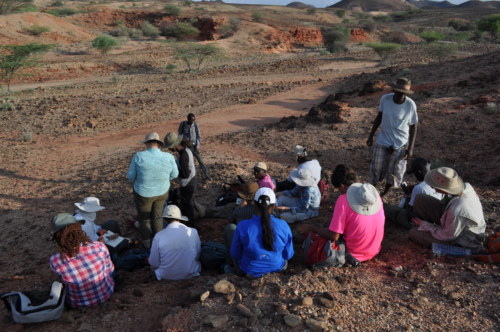
Prof. Nengo giving students a field pop-quiz.
Photo credit: Wambui Mbogo.
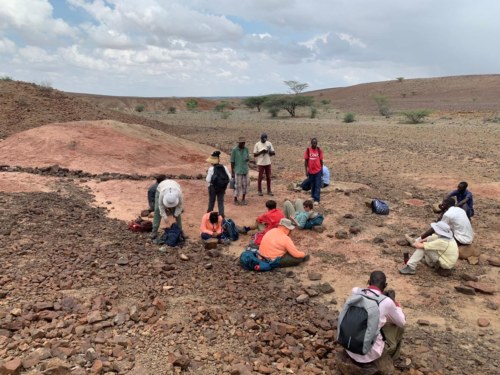
In the red sediments series
Photo credit: Medina Lubisia.
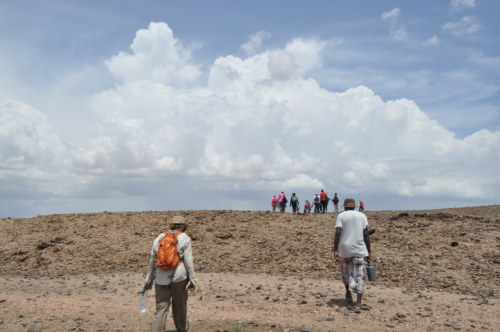
Heading back to the camp.
Photo credit: Wambui Mbogo.
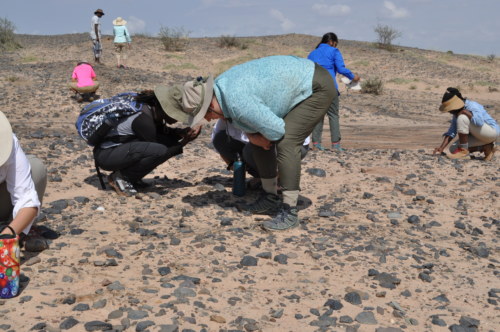
Students prospecting for fossils in the Plio-Pleistocene deposits.
Photo credit: Wambui Mbogo.ste
Nothing was more soothing than stepping in the cold waters of the Loreng’elup Laga after a hot day.
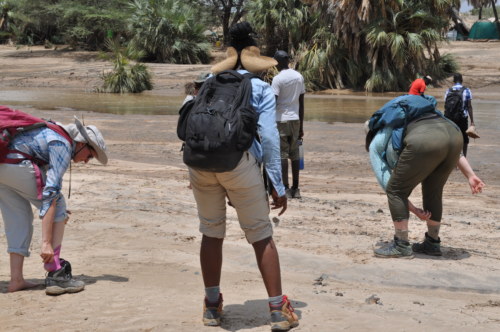
Students getting ready to cross the Laga.
Photo credit: Wambui Mbogo.
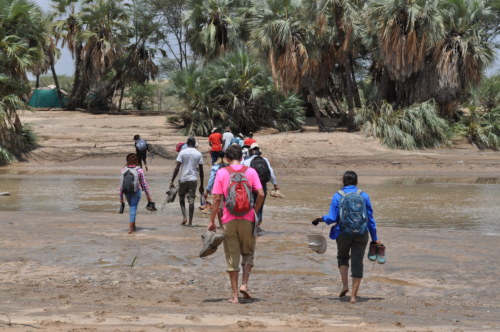
Crossing the Loreng’elup Laga.
Photo credit: Wambui Mbogo.
Watch this space for more updates!





